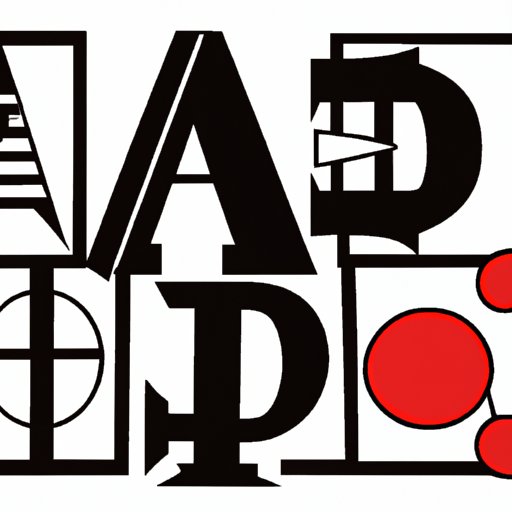
I. Introduction
Have you ever seen a font that you just had to use but didn’t know what it was called? Or seen a website with a beautiful font and wanted to know what it was? Identifying a font can be a frustrating and time-consuming task, but it doesn’t have to be. In this article, we’ll explore tips and tools that can help designers and non-designers alike quickly and easily identify fonts so they can use them for their own projects.
II. Anatomy of Fonts
Before we dive into the different tools and methods for identifying fonts, let’s first talk about font anatomy. Understanding what makes up a font can make it easier to identify different types of fonts. The different parts of a font include:
- Ascenders: The parts of the letters that extend beyond the x-height, such as the top of a lowercase “t” or “l”.
- Descenders: The parts of the letters that extend below the baseline, such as the bottom of a lowercase “g” or “y”.
- Serifs: The short lines or flourishes at the ends of the strokes in some fonts.
- X-height: The height of the lowercase letters, often used as a reference point for the rest of the font.
By understanding these different parts of a font, you can begin to classify different fonts and identify their unique traits that set them apart.
III. Online Tools
One of the easiest ways to identify a font is to use an online tool. Here are some of the best online tools for identifying fonts:
- WhatTheFont: Upload an image of the text you want to identify and WhatTheFont will try to match it to a font in their database.
- WhatFontIs: Similar to WhatTheFont, this tool allows you to upload an image of text and identify the font. It also allows you to identify fonts based on text samples or URLs.
- Font Squirrel Matcherator: This tool allows you to upload an image of the font or enter a URL and will try to identify the font.
When using these tools, be sure to use high-quality images or samples of the text to improve the accuracy of the identification. Additionally, it’s helpful to have multiple samples of the text to compare to increase the chance of a successful identification.
IV. Font Categories
Another way to narrow down the search for a font is to understand the different font categories. The four main categories are:
- Serif: Fonts with small lines or flourishes at the ends of the strokes.
- Sans-serif: Fonts without the small lines or flourishes.
- Display: Unique and visually striking fonts used for headings or titles.
- Script: Fonts that mimic handwriting or calligraphy.
By knowing which category a font falls under, you can eliminate fonts that don’t fit that category and more quickly identify the font you’re looking for.
V. Unique Traits
Each font has its own unique characteristics that differentiate it from other fonts. These traits can include the shape of the letter-forms, the curves, the spacing between letters, and the thickness of the strokes. By learning to spot these unique traits, you can more easily identify a font. Here are some examples:
- Helvetica: Known for its clean lines and simple, modern design.
- Garamond: A classic font with a more traditional and timeless style.
- Bodoni: Identified by its high contrast in stroke weight and sharp, thin serifs.
By examining these unique traits, you can begin to develop an eye for fonts and more quickly identify them in the future.
VI. Comparing Fonts
Fonts can sometimes look very similar to each other, making it difficult to tell them apart. Here are some tips for comparing fonts:
- Zoom in: By zooming in on the letters, you can more easily see the details that set the fonts apart.
- Check the spacing: Different fonts will have different spacing between letters and words.
- Look at the curves and angles: Different fonts will have different curves and angles in the letter-forms.
By paying attention to these details, you can more accurately compare fonts and identify the right one for your project.
VII. Developing an Eye for Fonts
One of the best ways to become proficient in identifying fonts is to practice and study font history. By studying fonts and practicing on different fonts, you can develop an eye for the unique traits of each font and learn to more quickly identify them. Some resources for font study include:
- Google Fonts: A free resource for downloading and testing different fonts.
- Typographie.Guru: A community for typography enthusiasts and professionals to discuss and learn about typography.
- Typewolf: A website that showcases different fonts and provides examples of how they are used.
By continuing to learn about fonts and practicing your identification skills, you’ll be on your way to becoming an expert in font identification.
VIII. Conclusion
Identifying a font can be a daunting task, but with the tips and tools provided in this article, you can more quickly and easily identify the right font for your project. By understanding font anatomy, using online tools, knowing font categories, recognizing unique traits, comparing fonts, and developing an eye for fonts, you’ll be well on your way to becoming a font identification expert.
Remember, font identification skills are valuable for designers and non-designers alike, helping you to create visually appealing designs that stand out from the crowd.




